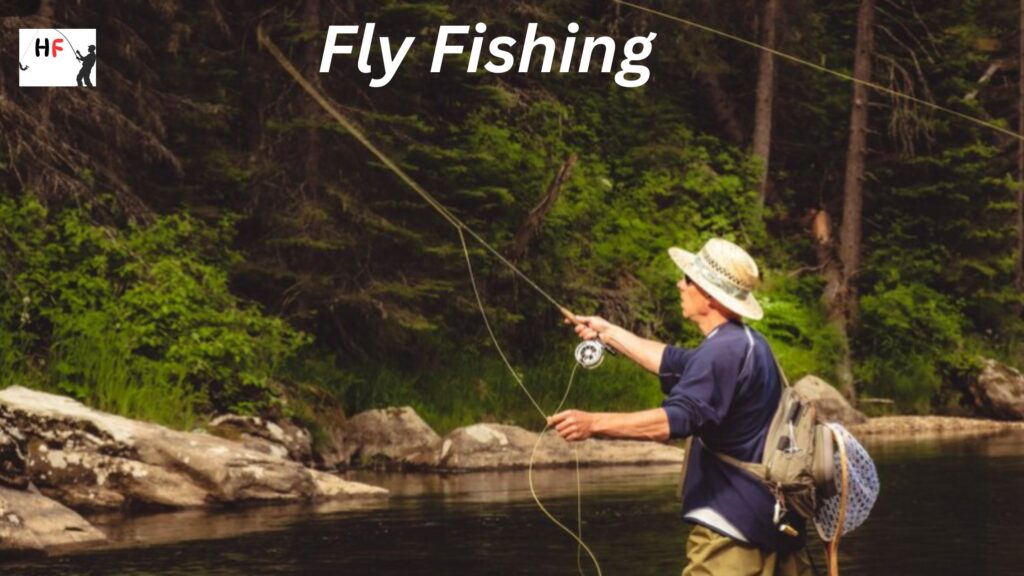
Fly fishing is more than just a hobby, it’s a timeless method of fishing that combines skill, patience, and a connection to nature. This form of angling has captivated outdoor enthusiasts for centuries. Whether you’re new to fishing or looking to refine your skills, understanding the nuances of fly fishing can make all the difference. In this comprehensive guide, we’ll explore the history, techniques, and practical case studies that reveal how fly fishing continues to evolve while staying true to its roots.
What is Fly Fishing?
Fly fishing is a type of fishing where an artificial “fly” is used as bait. Unlike traditional fishing methods that rely on weighted lures or bait, fly fishing uses a lightweight fly attached to a special line and rod. The casting technique is unique and requires practice to master, as it relies on the weight of the line rather than the lure to achieve distance and accuracy.
How Fly Fishing Differs from Traditional Fishing
- Casting Technique: In fly fishing, the angler uses a repetitive motion to build momentum and place the fly accurately in the water. This technique is known as the “false cast.”
- Equipment: Fly rods, reels, and lines are designed specifically for this method. Fly lines are typically heavier and thicker than traditional fishing lines.
- Bait: Instead of live bait or heavy lures, anglers use artificial flies that imitate insects or small fish.
The History of Fly Fishing
Fly fishing has ancient origins, with records of similar methods being used as early as 200 AD. The first detailed accounts of fly fishing come from Claudius Aelianus, a Roman writer who described anglers in Macedonia using artificial flies made of red wool and rooster feathers.
During the 15th and 16th centuries, fly fishing gained prominence in England. One of the most significant works in fly fishing literature is “The Compleat Angler” by Izaak Walton (published in 1653). Walton’s book detailed various techniques and philosophies of fishing, many of which are still relevant today.
In the 19th century, fly fishing spread to North America, where it evolved to suit different fish species and environments, such as trout-filled streams in the Rockies and saltwater flats in Florida.
Essential Fly Fishing Gear
If you plan to start with fly fishing, having the right gear is crucial. Here’s a breakdown of essential equipment:
1. Fly Rods
Fly rods are typically categorized by weight, ranging from 1-weight to 14-weight. The choice depends on the type of fish and water conditions. A 5-weight rod is standard for trout fishing. Heavier rods (8-weight and above) are ideal for larger species like salmon or saltwater fish.
2. Fly Reels
Reels hold the fly line and provide drag when fighting fish. Modern reels are made of aluminum or composite materials and have adjustable drag systems.
3. Fly Lines
Fly lines are available in different weights, tapers, and densities. The most common types are floating lines, sinking lines, and intermediate lines.
4. Leaders and Tippets
The leader is a clear, tapered line that connects the fly line to the fly. The tippet is the final, thin section of the leader. Both are crucial for presenting the fly naturally.
5. Flies
Flies come in three main categories:
- Dry Flies: Imitate insects that float on the water surface.
- Nymphs: Mimic immature insects that live underwater.
- Streamers: Resemble small fish or aquatic creatures.
6. Waders and Boots
Waders allow anglers to stay dry while fishing in rivers or streams, and wading boots provide traction on slippery rocks.
Basic Fly Fishing Techniques
Mastering a few fundamental techniques is essential for success in fly fishing. Here are some key methods:
1. Casting
The basic fly-casting technique uses a back-and-forth motion to propel the fly line. Two popular casting methods are:
- Overhead Cast: The most common and versatile technique.
- Roll Cast: Useful in situations with limited backcasting space.
2. Mending the Line
Mending helps prevent the fly from dragging unnaturally. By adjusting the line’s position, anglers can achieve a more natural drift.
3. Setting the Hook
When a fish strikes, a quick “strip set” or “lift set” helps secure the hook in the fish’s mouth.
4. Playing and Landing Fish
Applying steady pressure and letting the fish tire itself out is key to successfully landing your catch. Avoid forcing the fish in too quickly to prevent break-offs.
Case Study: Fly Fishing for Trout in Montana
One of the best-known fly fishing destinations in the United States is the state of Montana, particularly the Yellowstone and Madison Rivers. These rivers are home to thriving populations of rainbow and brown trout.
Scenario: A Day on the Yellowstone River
Angler: John, is a seasoned fly fisherman with over 10 years of experience.
Objective: Catching rainbow trout during the summer hatch.
Gear: John uses a 5-weight rod, floating line, and a selection of dry flies, including the famous Elk Hair Caddis and Pale Morning Dun.
Technique: John carefully watches for “rises,” where trout break the water surface to eat insects. By using a delicate presentation, he casts the fly upstream and allows it to drift naturally over the feeding fish.
Result: After several casts, John hooks a 16-inch rainbow trout. By carefully mending the line and using light pressure, he successfully lands the fish after a brief fight.
Key Takeaway: Matching the hatch (choosing a fly that imitates the insects currently on the water) and perfecting the drift are critical factors in successful fly fishing.
